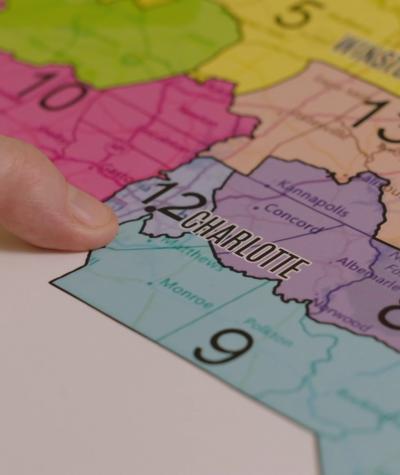On September 3, 2019, the Wake County Superior Court struck down North Carolina’s state House and Senate maps as unconstitutional partisan gerrymanders, and assigned a deadline of two weeks (September 18, 2019) for the legislature to have new maps redrawn and enacted.
The Court stated that it would also appoint a referee to review and assess the remedial maps submitted by the General Assembly, or to draw remedial maps if the General Assembly is unable to or if the proposed maps are unacceptable. The court appointed Stanford Professor Nate Persily as the referee.
The court ordered that specific criteria must be followed when redrawing the maps, and specified that the legislature could not simply tweak the invalidated 2017 district maps.
These criteria include compliance with the Voting Rights Act, no consideration of partisanship or election results, equal population, contiguity, using the same county groupings found in the 2017 maps, compactness, precinct splits, municipal boundaries, and reasonable efforts to avoid the pairing of incumbents.
The court also required that the entire process of drawing new maps be in “full public view,” with “all map drawing [occurring] at public hearings” and “any relevant computer screen visible to legislators and public observers.” The court also prohibited the hiring of any consultants who are not legislative employees without the defendants first obtaining the permission of the court.
However, the legislature’s conduct in redrawing the maps has led to questions about the fairness of the maps and the map-drawing process.
On Wednesday, September 11, Senate Redistricting Committee Chairman Ralph Hise ejected press and members of the public from the map-drawing area, leaving people with no understanding of why maps were being altered, even though the court ordered that “Legislative Defendants and their agents shall not undertake any steps to draw or revise the new districts outside of public view.”
On Friday, September 13, before posting the legislature’s final state house maps, North Carolina Speaker of the House Tim Moore announced for the first time that the redistricting meeting that morning would be the only opportunity for public comment.
Instead of drawing new, fairer maps themselves, the North Carolina GOP “randomly” selected their “base maps” from the 2,000 randomly generated maps drawn by plaintiffs’ expert Dr. Jowei Chen, which were presented at trial to prove the extreme gerrymandering of the then-existing state legislative plans.
Contrary to the Senate Redistricting Committee Chairman’s statement, the court has not “blessed” the trial maps as being possible alternatives to the current maps. These maps were created to prove how abnormally gerrymandered the current maps are—and not necessarily as remedial maps.
In addition, despite the court’s order, on Monday September 9, attorneys representing Republican leadership emailed prohibited partisan data for all of the trial maps to every member of the House redistricting committee and legislative staff.
While legislators and staff were instructed to delete the data and original email, the redrawing process has already been tainted, and initial analyses by Princeton Gerrymandering Project and Daily Kos indicate that the selected trial maps being used by North Carolina legislative committees are still biased toward Republicans.
North Carolina’s state legislative maps have been overturned multiple times over the last decade. Even when given another chance, legislators seem to continue to attempt to stack the deck in their favor. None of the legislators have offered clear reasoning as to why they are using an improper process for redrawing their legislative maps, despite the court’s order.
Over the last couple of years, North Carolina has been engulfed in lawsuits challenging the gerrymandered state legislative and congressional districts. Because of the dysfunctional process state legislators are using to redraw their maps, lawyers for the plaintiffs have already stated they believe that legislators have directly violated the court’s order.
The recent developments in the North Carolina Legislature are a testament to how the redistricting process is distorted when self-interested representatives, whose elections depends on how the districts are drawn, get to draw their own district lines.
Independent redistricting commissions are one of the most effective ways to check partisan interests during the map-drawing process, and they are in place in a number of states.
In July of 2018, CLC released a guide on designing independent redistricting commissions, and has been assisting over a dozen states in trying to reducing partisanship during redistricting. For years, CLC has been working to make the redistricting process in each state more democratic, accountable, and transparent. Learn more about our efforts here.
This post was written by Sheely Edwards, a 2019 CLC Hinckley intern, and student at the University of Utah.
